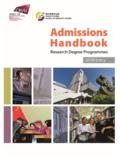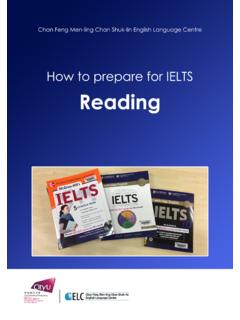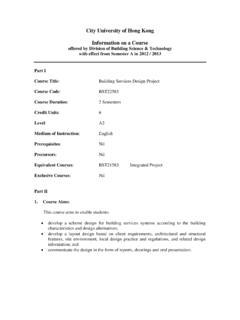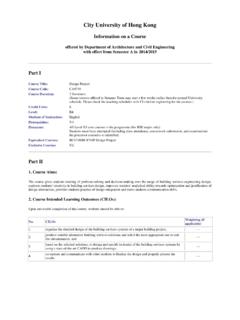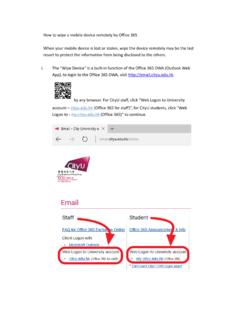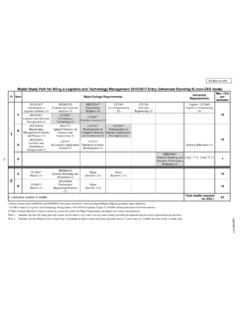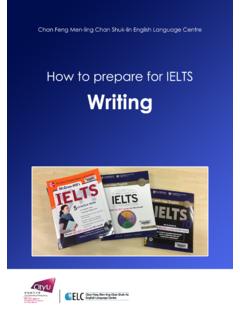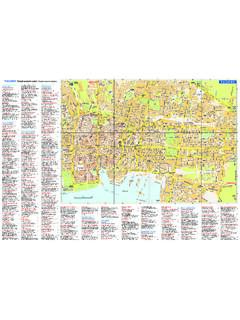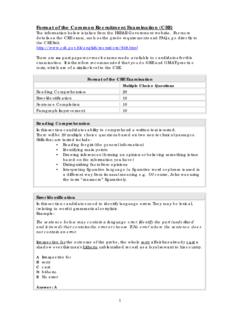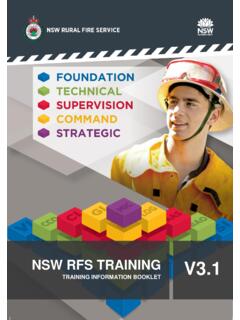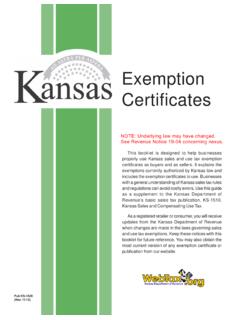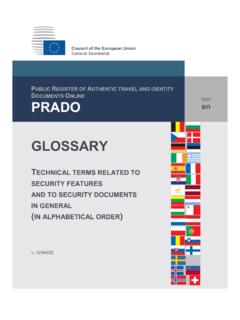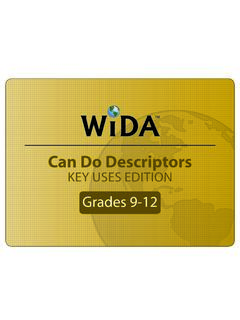Transcription of How to prepare for IELTS - City University of Hong Kong
1 How to prepare for IELTS Reading 1 Contents Page Details of the reading test 2 The Question Types 1. Multiple choice 4 2. Short answer questions 6 3. Sentence completion questions 8 4. Notes/ table/ form/ summary/ flow chart/diagram completion questions 11 5. Yes, no, not given or True, false, not given 15 6. Classification questions 17 7. Matching 19 8. Choosing headings 21 9. Scanning & identifying location of information 23 10. Labelling a diagram which has numbered parts 25 General tips for reading 27 Make sure you have a copy of the How to prepare for IELTS FAQs booklet in addition to this booklet .
2 How to prepare for IELTS Reading 2 Details of the Reading Test Procedure of the test The reading module is the second test you do on the test day. You are given a question booklet and an answer sheet. There is no time, unlike in the listening test, at the end to transfer answers so you have to write your answers directly onto the answer sheet. You are given 60 minutes for the test. The test instructions indicate how much time you should spend on each section of the test. Structure of the test The test is divided into three sections.
3 You are given a reading passage with questions in each section. The questions can be both before and after the passages. The topics of the passages are of general interest and come from magazines, journals, books and newspapers. At least one of the passages will present a logical argument. The texts increase in difficulty as the test progresses. There may be a glossary of technical words. Question types* The types of tasks are: 1. Multiple Choice 2. Short-answer questions 3.
4 Sentence completion 4. Notes/table/summary flow-chart/diagram completion 5. Yes, no, not given or True, false, not given 6. Classification 7. Matching lists/phrases 8. Choosing headings for paragraphs/sections of a text 9. Scanning and identifying location of information 10. Labelling a diagram which has numbered parts There are 40 questions in total. Each of the three sections has around 10-15 questions and there are at least two types of questions in each section. *See the page 3 onwards for details on the task types, suggested strategies for doing them and suggestions on how to get practice.
5 How to prepare for IELTS Reading 3 Marking You are given a mark for each of the 40 questions. Your result is converted into a score which corresponds to one of the bands from 1-9. You will see the band on your result sheet. You can be awarded a whole band or a half band for the reading section. (See IELTS Handbook: or Focus on IELTS : for details.) How to prepare for IELTS Reading 4 The Question Types 1. Multiple Choice The Questions There are three types of multiple choice questions in the IELTS reading exam.
6 Type 1. Where there is one possible answer. Type 2. Where there are multiple answers for only one mark. Type 3. Where there are multiple answers and one mark for each. For these questions you may be given the start of a sentence which you have to complete with one out of four choices. Or you may be presented with a question and asked to find two, three or four items in a list of answers. You could be asked to identify facts or opinions in the texts. Multiple choice questions can test both your global understanding of the text or ask you for specific information.
7 This means you will have to make the decision yourself whether to skim or scan the text. Look at the 3 examples below. Type 1 Questions 1-3 Choose the appropriate letters A-D and write them in boxes 1-3 on your answer sheet. 1 According to information in the text, asparagine A is poisonous. B can cause cancer. C is harmless unless heated. D should only be eaten in small amounts. 2 According to information in the text, acrylamide A has been found in lots of fried food. B has been found in snacks in Sweden.
8 C is only found in western cooking. D is in water. 3 According to information in the text, process foods A should be avoided. B are cheaper. C are full of chemicals. D are the most tasty foods. How to prepare for IELTS Reading 5 Type 2 Question 4 Write TWO letters A-F in box 4 on your answer sheet. 4 Which TWO examples of food is asparagine found in? A peanuts B rice C French fries D asparagus E chocolate F bananas Type 3 Questions 5 - 7 The list below gives some of the problems for dieters raised by Dr Jones.
9 Which THREE of these problems are mentioned by the writer of text? A Accessible junk food. B Coffee bars and after-work drinks. C Partners. D Stress & emotional situations. E Saboteurs and false friends. F Weakened resolve. Also note that you may be asked to circle ONE, TWO, THREE or FOUR letters. How to do the multiple choice questions Read the instructions carefully and check how many letters you need to circle. Skim all the questions and the answer choices quickly. As you do this, v underline the key words (the words that give you the most information).
10 V try to get an idea of the topic you will be reading about from the vocabulary of the questions. v look at any illustrations or diagrams that go with the text. How to prepare for IELTS Reading 6 Go back to the first question. Decide if you are looking for specific information or whether the question requires you to understand the whole text . Then either scan or skim the text, as appropriate, to find the answer. Read the relevant part of the text very carefully. Don t leave any questions unanswered.
